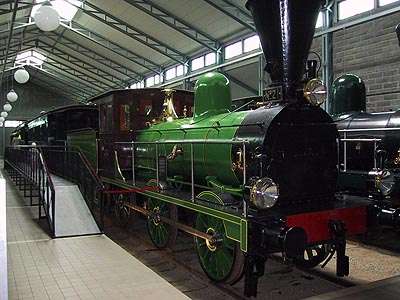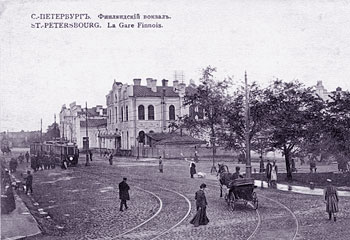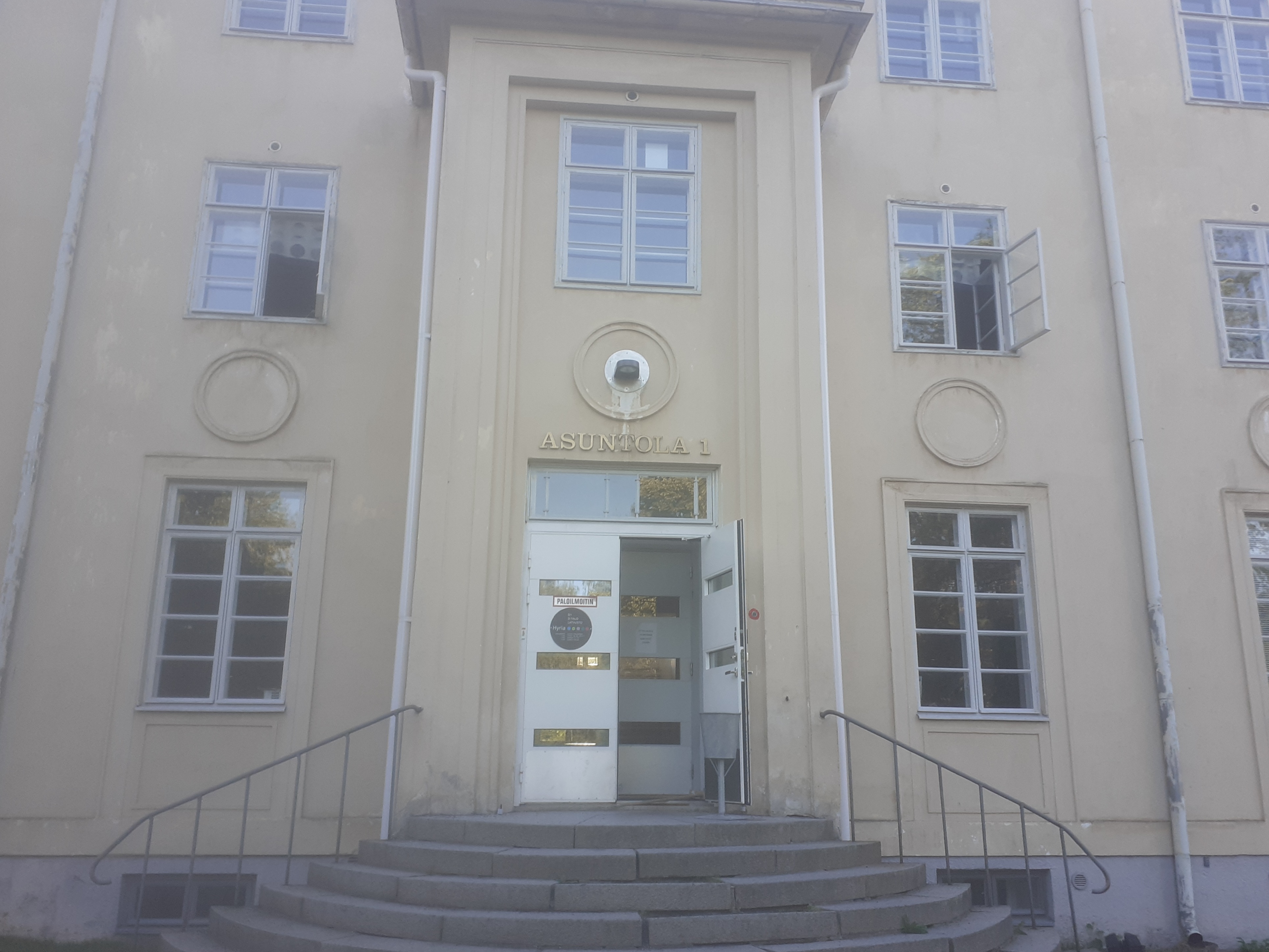|
VR Class Vk4
The locomotive that came to form VR Class Vk4 was originally one of a pair of 0-4-0T locomotives ordered from Rheinmetall Borsig Lokomotiv Werke (AEG), Germany to work at Ino fortress at Terijoki on the Karelian Isthmus. The locomotives had 2 axles, they were the wet-steam type, and used a slip-Walschaert valve gear. Production numbers and years were 7268/1909 and 7858/1910. The fortress was in Finnish hands when Finland became independent. The fortress was not needed after the Treaty of Tartu in 1920. It was therefore decided to cancel the order for the locomotives. But this was not possible so it was decided to use the locomotives in the dismantling of the fortress. In 1919, the second locomotive, 7858/1910, was sold to as an industrial locomotive. The first locomotive continued to work dismantling the fort until 1922 when it was acquired by a building company in Hanko. After this the locomotive was sold to Enqvist Ltd Ab, Tampere who scrapped it in 1951. The second locomoti ... [...More Info...] [...Related Items...] OR: [Wikipedia] [Google] [Baidu] |
Finnish Railway Museum
The Finnish Railway Museum ( fi, Suomen Rautatiemuseo) is located in Hyvinkää, Finland. It was founded in 1898 and located in Helsinki. The museum was moved to Hyvinkää in 1974. The museum is on the original station and yard site of the Hanko–Hyvinkää railway. In addition to the station building, there is a roundhouse and several other preserved buildings, mainly from the 1870s. The museum also has a live steam backyard railroad track, where train rides are offered to the public during special run days in the summer months. Exhibits See also * Jokioinen Museum Railway * Hanko–Hyvinkää railway The Hanko–Hyvinkää Railroad, 1872–1875 ( sv, Hangö–Hyvinge järnväg), was Finland's first privately funded railway. Hanko is the southernmost town in Finland. Hanko has a seaport which, thanks to its location, can be used for the ... External links Finnish Railway MuseumOfficial website* ttp://commons.wikimedia.org/wiki/Steam_locomotives_of_Finland Photogr ... [...More Info...] [...Related Items...] OR: [Wikipedia] [Google] [Baidu] |
Jokioinen Museum Railway
The Jokioinen Museum Railway is located in Jokioinen, Finland. It is located on the last operating commercial narrow gauge railway in Finland, the gauge Jokioinen Railway. The museum was established on February 2, 1978, four years after the discontinued operation of the commercially-operated railway, when the new Jokioinen Museum Railway Limited joint stock company ( fi, Jokioisten Museorautatie Oy) bought the rail line from Jokioinen to Minkiö railway station, with its land and associated buildings. Museum steam trains began running that same year. In 1994 the line was extended with an stretch between Minkiö and Humppila. The museum railway station at Humppila is beside the station of the Turku-Toijala VR line, providing a convenient access to the museum. The Minkiö station has a narrow gauge museum with a collection of carriages and locomotives. There are a number other attractions in the vicinity of the railway. Gallery File:Jokioinen railway no. 4.jpg, A 2-6-2T b ... [...More Info...] [...Related Items...] OR: [Wikipedia] [Google] [Baidu] |
VR Locomotives
VR may refer to: Arts, entertainment and education * Virtual reality, a computer technology that simulates an environment with which a user may interact as if it was actually there * ''Virtua Racing'', a 1992 arcade racing game by Sega * Vocational rehabilitation * Spectre VR, an enhanced version of ''Spectre'' * ''VR.5'', an American science fiction television series in 1995 * ''VR Troopers'', an American action television show from 1994 to 1996 Businesses * VR (company), a Finnish railway company, formerly known as Valtion rautatiet ''(State Railways)'' * Valdosta Railway, in the US state of Georgia * Victorian Railways, in the Australian state of Victoria * Viktor & Rolf, an Amsterdam-based fashion house * German Cooperative Financial Group (''Volksbanken und Raiffeisenbanken'') * Cape Verde Airlines (IATA airline code) Government and military * Vetenskapsrådet, the Swedish Research Council * Volunteer Reserves (United Kingdom) * Fleet Logistics Support, a squadron of th ... [...More Info...] [...Related Items...] OR: [Wikipedia] [Google] [Baidu] |
VR Class Tk3
The Finnish VR Class Tk3 (original classification 'K5') was a 2-8-0 light freight locomotive. It was the most numerous steam locomotive class in Finland with 161 built. 100 locomotives were constructed between 1927 and 1930,Katajisto, Juhani. (1985). ''Eilispäivän kulkuneuvoja''. p. 42. Hämeenlinna:Tietoteos. . with a further 61 ordered and constructed 1943–53.Sakari K. Salo:Höyryveturikirja, They were numbered 800–899, 1100–1118, and 1129–1170. They were designed for a low axle load of just . This allowed them to operate on lightly laid secondary lines, but during their many years of service, up to the end of the steam era, they were also widely used on main lines hauling slow passenger trains that made frequent stops. They were affectionately called "Pikku-Jumbo" (The Little Jumbo) because of their good performance despite their low weight. They had a low fuel consumption (usually Tk3s used birch wood) and good riding characteristics. They also had good steaming ch ... [...More Info...] [...Related Items...] OR: [Wikipedia] [Google] [Baidu] |
VR Class Hr1
The Hr1 class (original classification P1) was the largest passenger express steam locomotive built in Finland. Twenty-two were built between the years 1937–1957. They were numbered 1000–1021. In the 1930s, there was a need for faster and heavier express trains in Finland, and the Hv1–Hv3 classes were not powerful enough to fill the need. Lokomo Oy in Tampere built first two prototypes, and after successful trials 20 more were built. Most of the locomotives were fitted with Wagner-type smoke deflectors, but the last two, which were equipped with roller bearings, had Witte-type deflectors. The class's nickname was , meaning approximately "(respected) Grandpa Pekka", after the President of Finland Pehr Evind Svinhufvud. The Hr1 was built for coal firing, but during the coal shortage after the war in 1945, birch wood was used as fuel. Larger chimneys needed for extinguishing wood sparks were temporarily fitted. The Hr1s were the most important express steam locomotive and ... [...More Info...] [...Related Items...] OR: [Wikipedia] [Google] [Baidu] |
VR Class Pr1
VR Class Pr1 (original classification N1, nickname ''Paikku'', from Finnish “paikallinen”, local) was a tank steam locomotive for local passenger services of Valtionrautatiet, Finnish railways. Ordering and delivery In the 1920s, VR was concerned about the low power and speed of their existing class Vk1-3 class locomotives that were used in local services, especially on the Helsinki commuter rail services. A decision was reached to order a new and powerful, by standards of that time, local traffic locomotive from Hanomag with the intention of licence manufacture of more units by Finnish locomotive works. At the same time, a shunting locomotive based on a similar design, VR Class Vr3, Vr3, was also ordered. The classes share many parts, including as frames, boilers and spaces for coal, but wheel arrangement, domes and top speed are very different because of their completely different roles. The locomotive was of tank design with small coal bunker in the rear, which limited ope ... [...More Info...] [...Related Items...] OR: [Wikipedia] [Google] [Baidu] |
History Of Rail Transport In Finland
:''This article is part of the history of rail transport by country series'' The history of rail transport in Finland began on January 31, 1862, with the opening of the railway line between Helsinki and Hämeenlinna. By 1900 most of the future main lines had been constructed, including the line to St. Petersburg.4rail.net - Reference - Finland - Railway History ''4rail.net'' By the time of the birth of the new Finnish Republic in 1917 lines connected all major cities, major ports, and reached as far as the Swedish border, and inner Finland as far north as Kontiomäki in region, as well as eastwards i ... [...More Info...] [...Related Items...] OR: [Wikipedia] [Google] [Baidu] |
List Of Finnish Locomotives
This is a list of locomotives and multiple units that have been used in Finland. VR Group (privatised in 1995, previously ''Valtionrautatiet'', Finnish state railways) had a monopoly on passenger traffic until 1.1.2021, but is currently the only passenger operator on the Finnish rail network. Some trainsets are however owned by other companies such as or Karelian Trains. The Finnish railways, as with the Russian railways, are laid to the same gauge of . Electric locomotives Diesel locomotives Petrol-Paraffin locomotives Petrol-Paraffin locomotive references Data from: * Finnish Railway Museum official website Steam locomotives Steam locomotive references Data from: * Finnish Railway Museum official website * Finnish website with locomotive technical data Electric multiple units Diesel multiple units See also * Finnish Railway Museum * Hanko–Hyvinkää railway * History of rail transport in Finland * Jokioinen Museum Railway Literature * * Ref ... [...More Info...] [...Related Items...] OR: [Wikipedia] [Google] [Baidu] |
Hyvinkää
Hyvinkää (; sv, Hyvinge, ) is a city and municipality of Finland. It is located in the Uusimaa region, approximately north of the capital Helsinki. The city was chartered in 1960. The population of Hyvinkää is (). Its neighboring municipalities are Riihimäki and Hausjärvi in the north, Mäntsälä in the east, Tuusula and Nurmijärvi in the south, and Vihti and Loppi in the west. Highways (such as Tampere Highway ( E12) and Hanko Highway) and rail connections make it one of the suburban commuter centers of Greater Helsinki. The city planning has had an emphasis on recreational facilities. Some of the more well-known buildings in Hyvinkää are, among others, the Church (1961, Aarno Ruusuvuori) of Hyvinkää and the manor house of Kytäjä. The Finnish Railway Museum is located in Hyvinkää. Hyvinkää is also home to Konecranes, which specializes in the manufacture and service of cranes, and KONE Elevators, the world's third-largest elevator company who manufacture, ... [...More Info...] [...Related Items...] OR: [Wikipedia] [Google] [Baidu] |
Borsig Lokomotiv Werke (AEG)
The rail vehicle factory in Hennigsdorf, Germany, was founded in 1910 by AEG. Locomotive production began in 1913, and in the 1930s absorbed the work of the August Borsig locomotive factory, being renamed the Borsig Lokomotiv Werke GmbH until 1944. After the Second World War the factory was nationalised in the German Democratic Republic and produced electric locomotives for home use and for export, mainly to Communist Bloc countries under the name Lokomotivbau-Elektrotechnische Werke (LEW). After German reunification in 1990, the plant returned to AEG ownership, becoming AEG Schienenfahrzeuge GmbH, and then passed through mergers of its parent companies to Adtranz (1996), Bombardier Transportation (2001) and then Alstom (2021). Under Adtranz's ownership production of locomotives ended, and the site now manufactures diesel and electric multiple units. History In 1910 the AEG company acquired a of land in Hennigsdorf near Berlin for the creation of a ceramics factory which began ... [...More Info...] [...Related Items...] OR: [Wikipedia] [Google] [Baidu] |
Tampere
Tampere ( , , ; sv, Tammerfors, ) is a city in the Pirkanmaa region, located in the western part of Finland. Tampere is the most populous inland city in the Nordic countries. It has a population of 244,029; the urban area has a population of 341,696; and the metropolitan area, also known as the Tampere sub-region, has a population of 393,941 in an area of . Tampere is the second-largest urban area and third most-populous individual municipality in Finland, after the cities of Helsinki and Espoo, and the most populous Finnish city outside the Greater Helsinki area. Today, Tampere is one of the major urban, economic, and cultural hubs in the whole inland region. Tampere and its environs belong to the historical province of Satakunta. The area belonged to the Häme Province from 1831 to 1997, and over time it has often been considered to belong to Tavastia as a province. For example, in '' Uusi tietosanakirja'' published in the 1960s, the Tampere sub-region is presented as p ... [...More Info...] [...Related Items...] OR: [Wikipedia] [Google] [Baidu] |
Hanko, Finland
Hanko (; sv, Hangö) is a port town and municipality on the south coast of Finland, west of Helsinki. Its current population is (). The town is bilingual, with a majority being Finnish speakers and a strong minority being Swedish speakers (). The skyline of Hanko is dominated by the church and the water tower. Both of them received their current appearance after World War II, as their predecessors were either damaged or destroyed by the Soviet Armed Forces. Geography The Hanko Peninsula, on which the city is located, is the southernmost tip of continental Finland. The soil is a sandy moraine, and vegetation consists mainly of pine and low shrubs, mostly ''Calluna''. Hanko is known for its beautiful archipelago. The town has a coastline of approximately , of which are sandy beaches. There are also over 90 small islands and islets within the city limits. Climate Hanko has a humid continental climate (Köppen ''Dfb''), similar to other locations in southern Finland with ... [...More Info...] [...Related Items...] OR: [Wikipedia] [Google] [Baidu] |



